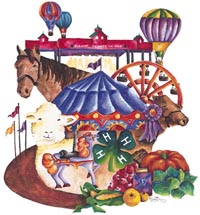Applications must be picked up and returned to the Carroll County Extension Office between December 6 and December 20. We cannot accept applications before or after those dates. All applications must be into the Extension office by December 20 at 4:30 p.m.
A Farm Serial Number is required information for the application, and it is strongly recommended you contact the Farm Service Agency (FSA) at (502) 732-6931 to receive or confirm that number. Only the FSA can provide your Farm Serial Number.
The CAIP is a cost-share program that originates from the 1998 Master Tobacco Settlement and provides funding for the following agricultural categories:






















